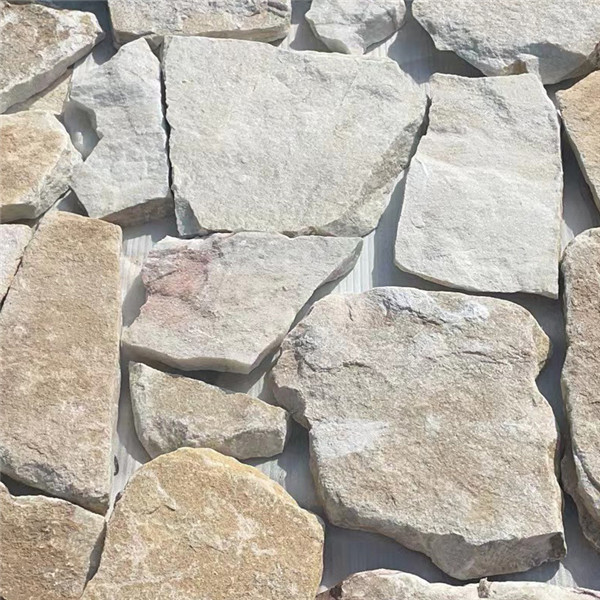Introduction
Colonial cultured stone has long been admired for its timeless elegance and classic appeal. This type of stone is a popular choice for homeowners and builders looking to add a touch of sophistication to their properties. In this comprehensive guide, we will explore the origins of colonial cultured stone, its characteristics, benefits, installation process, maintenance tips, and popular applications.
Origins of Colonial Cultured Stone
Colonial cultured stone is a type of manufactured stone that is designed to mimic the look and feel of natural stone. It is made by casting concrete into molds that are created from real stone pieces. The result is a product that closely resembles the texture, color, and shape of natural stone, while offering the benefits of being more lightweight and easier to work with.
Colonial cultured stone draws inspiration from the architectural styles of the colonial period in American history, particularly the Georgian, Federal, and Colonial Revival styles. These styles are characterized by their symmetrical designs, elegant proportions, and use of natural materials such as stone and brick. Colonial cultured stone captures the essence of these historic architectural styles, making it a popular choice for homeowners seeking to recreate the charm and sophistication of the past.
Characteristics of Colonial Cultured Stone
Colonial cultured stone is known for its authentic appearance and durability. It is available in a wide range of colors, textures, and shapes, allowing for endless design possibilities. The stones are carefully crafted to replicate the natural variations and imperfections found in real stone, giving them a realistic and organic look.
One of the key advantages of colonial cultured stone is its lightweight nature. Unlike natural stone, which can be heavy and cumbersome to work with, colonial cultured stone is much easier to handle and install. This makes it a popular choice for both interior and exterior applications, as it can be used to create stunning accent walls, fireplaces, facades, and more.

Benefits of Colonial Cultured Stone
Colonial cultured stone offers a number of benefits that make it an attractive choice for homeowners and builders. One of the main advantages of this type of stone is its affordability. Compared to natural stone, colonial cultured stone is more cost-effective, making it a budget-friendly option for those looking to add a touch of luxury to their homes.
In addition to its affordability, colonial cultured stone is also highly versatile. It can be used in a wide range of applications, from exterior cladding to interior accent walls. The stones are available in various sizes and shapes, allowing for endless design possibilities. Whether you prefer a traditional, rustic look or a more modern aesthetic, colonial cultured stone can be customized to suit your style.
Installation Process of Colonial Cultured Stone
Installing colonial cultured stone requires careful planning and preparation to ensure a successful outcome. The first step in the installation process is to prepare the surface where the stone will be applied. This may involve removing existing materials, such as drywall or siding, and creating a clean, level base for the stone.
Once the surface is prepared, the next step is to apply a weather-resistant barrier, such as house wrap, to protect the underlying structure from moisture. This barrier helps to prevent water infiltration and ensures the longevity of the stone installation.
After the barrier is in place, the colonial cultured stone can be installed using a mortar mix. The stones are carefully arranged and secured to the surface, creating a seamless and cohesive look. Grout may be applied between the stones to fill in gaps and enhance the aesthetic appeal of the installation.
Maintenance Tips for Colonial Cultured Stone
Proper maintenance is essential to ensure the longevity and beauty of colonial cultured stone. One of the key maintenance tasks is to regularly clean the stone to remove dirt, dust, and other debris that can accumulate over time. This can be done using a mild detergent and water, along with a soft brush or cloth.
It is also important to inspect the stone regularly for any signs of damage, such as cracks or chips. These issues should be addressed promptly to prevent further damage and maintain the integrity of the installation. In addition, applying a sealant to the stone can help protect it from stains, moisture, and other environmental factors.
https://www.fs-slate.com of Colonial Cultured Stone
Colonial cultured stone can be used in a wide range of applications to enhance the beauty and value of a property. One popular application is as exterior cladding, where the stone is used to create a stunning facade that adds character and charm to a home. The stones can also be used to create accent walls, fireplaces, and other interior features that provide a touch of elegance and sophistication.
In addition to residential applications, colonial cultured stone is also commonly used in commercial settings, such as hotels, restaurants, and retail stores. The versatility of the stone allows for creative and unique designs that can make a lasting impression on customers and clients.
Conclusion
Colonial cultured stone is a versatile and timeless building material that offers a wide range of benefits for homeowners and builders. Its authentic appearance, durability, and affordability make it a popular choice for those looking to add a touch of elegance to their properties. Whether used for exterior cladding, interior accent walls, or other applications, colonial cultured stone can enhance the beauty and value of any space. With proper installation and maintenance, this type of stone can provide years of enjoyment and aesthetic appeal.
